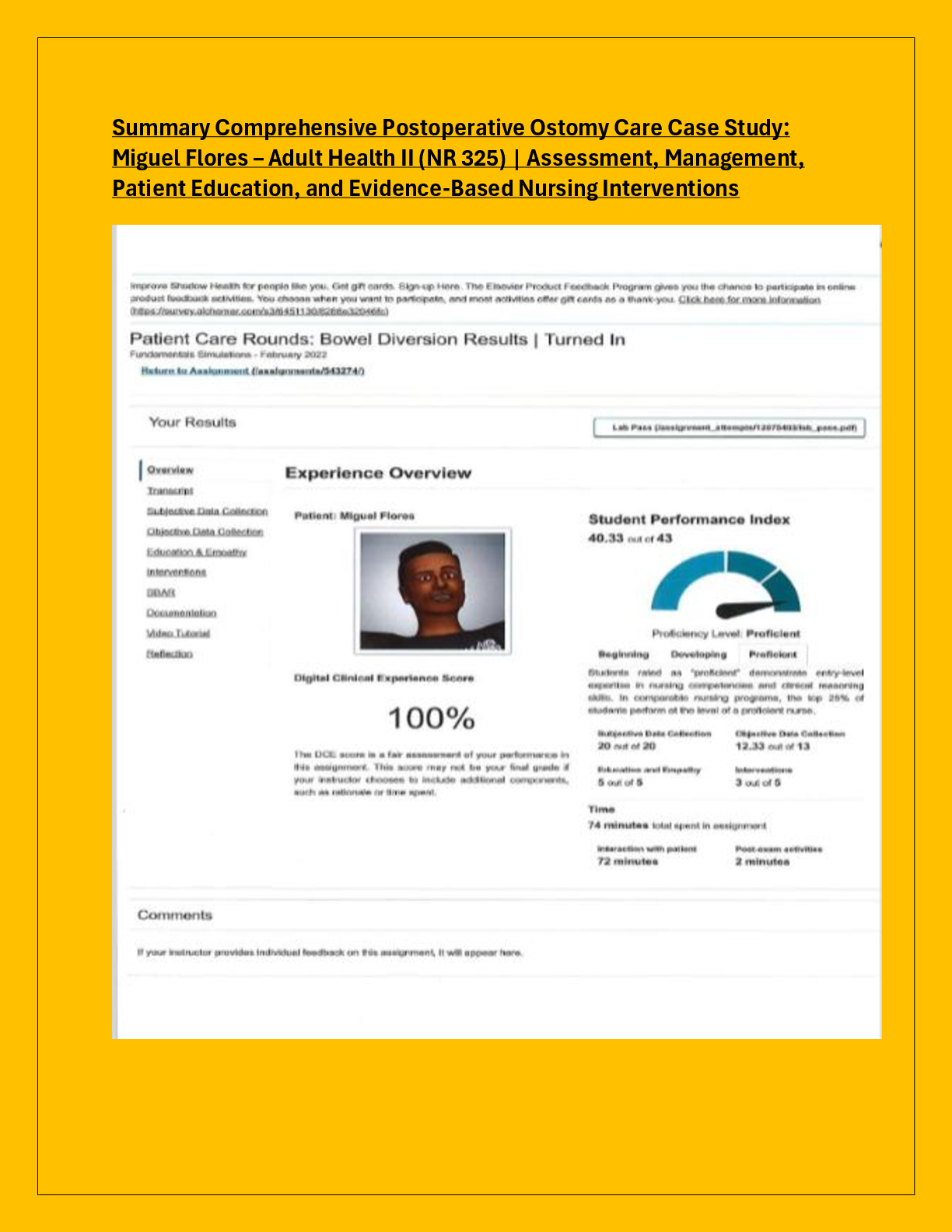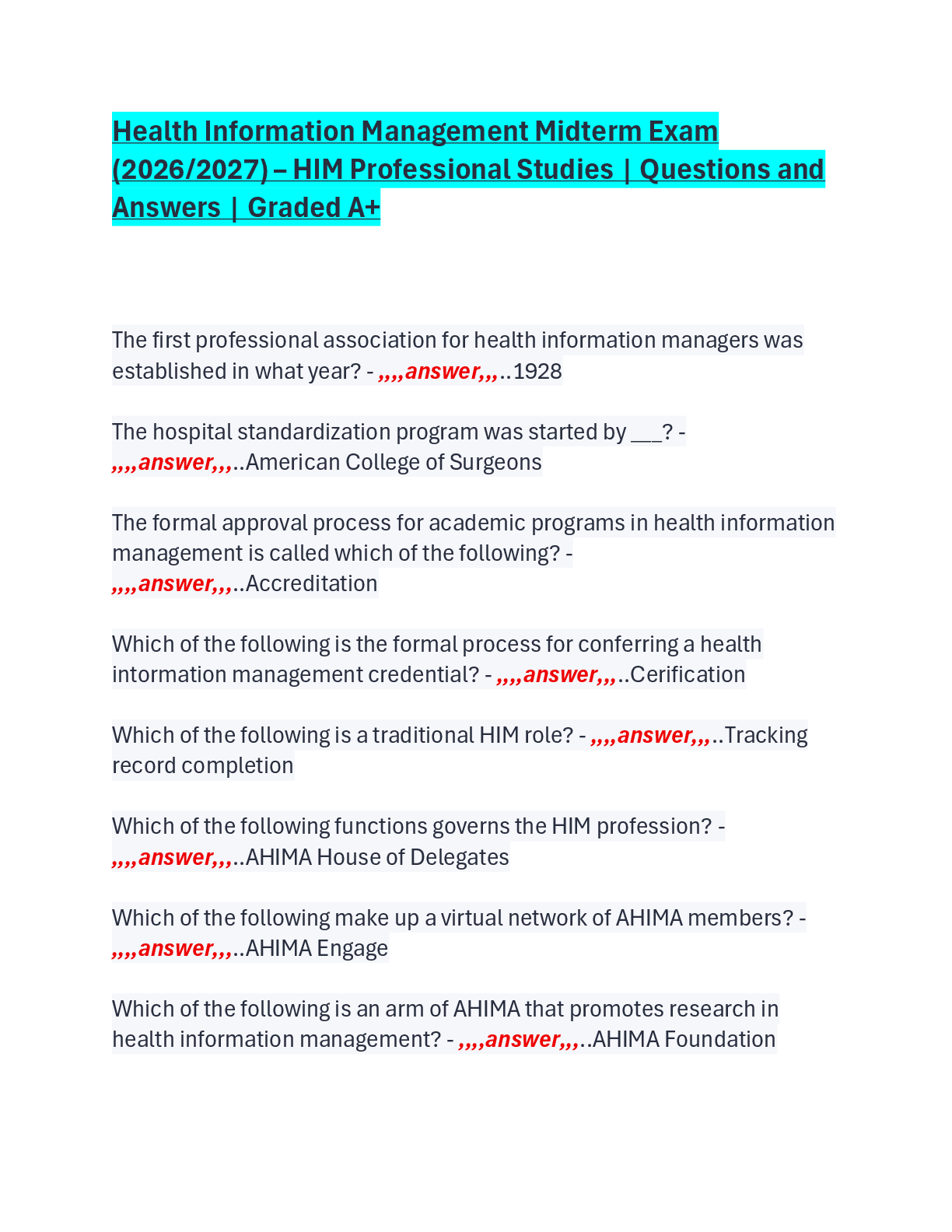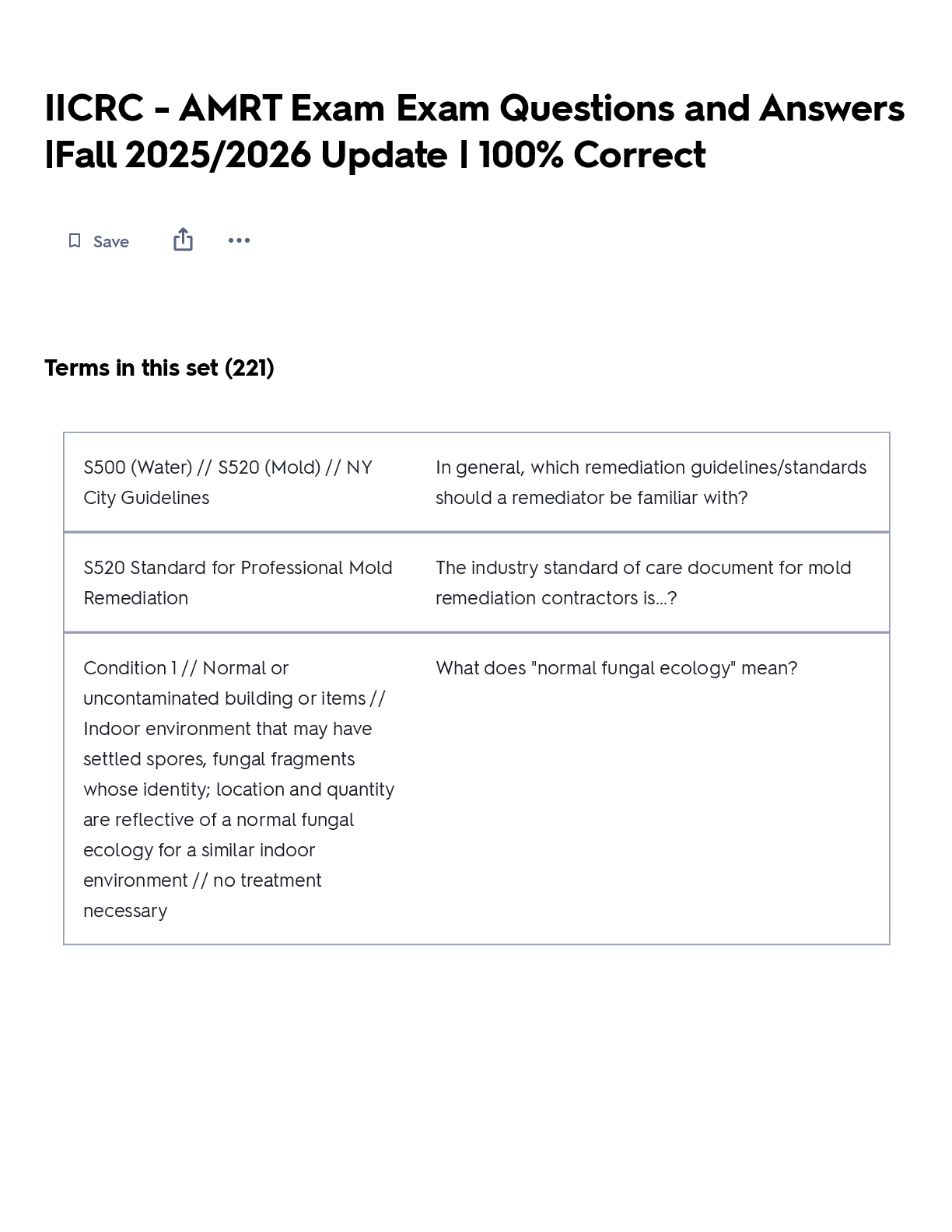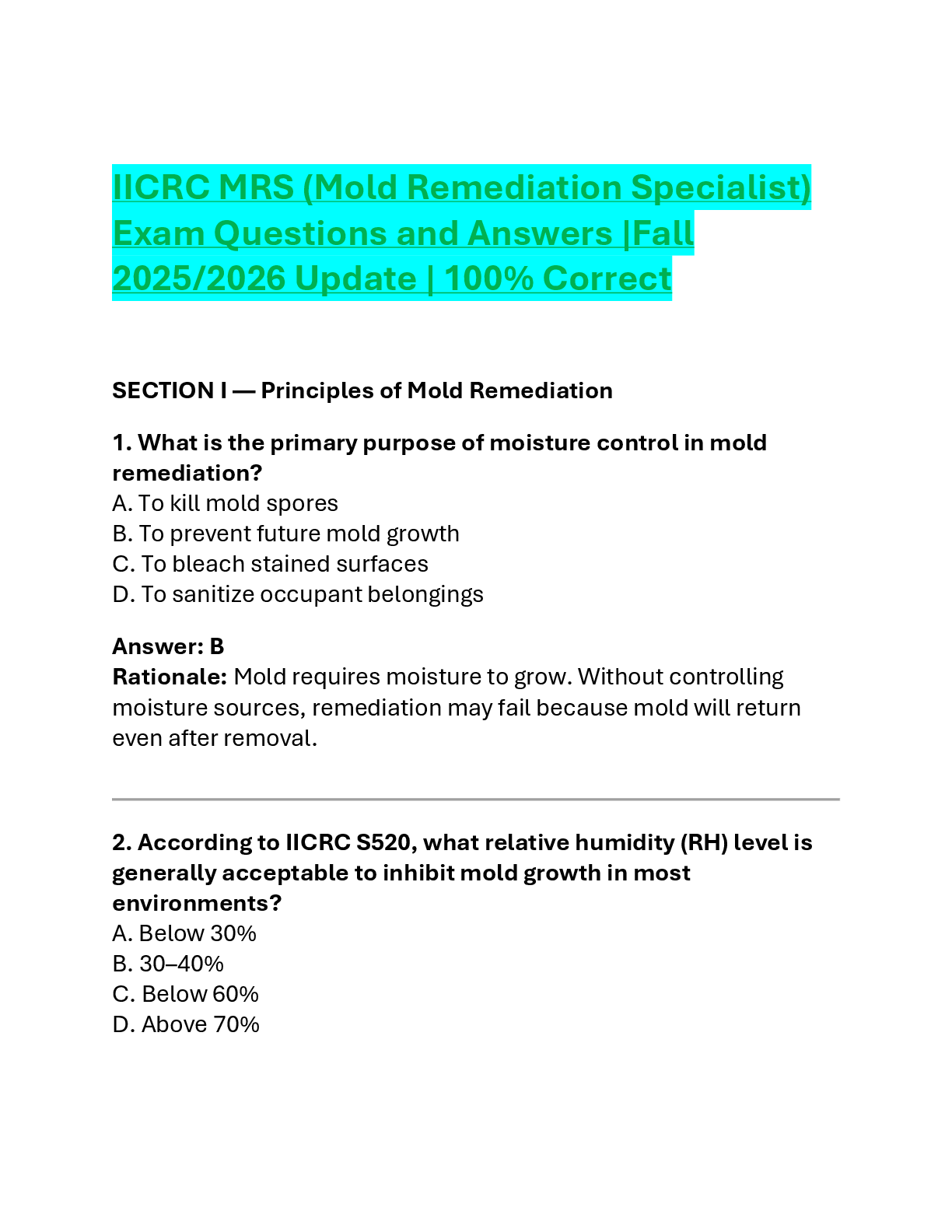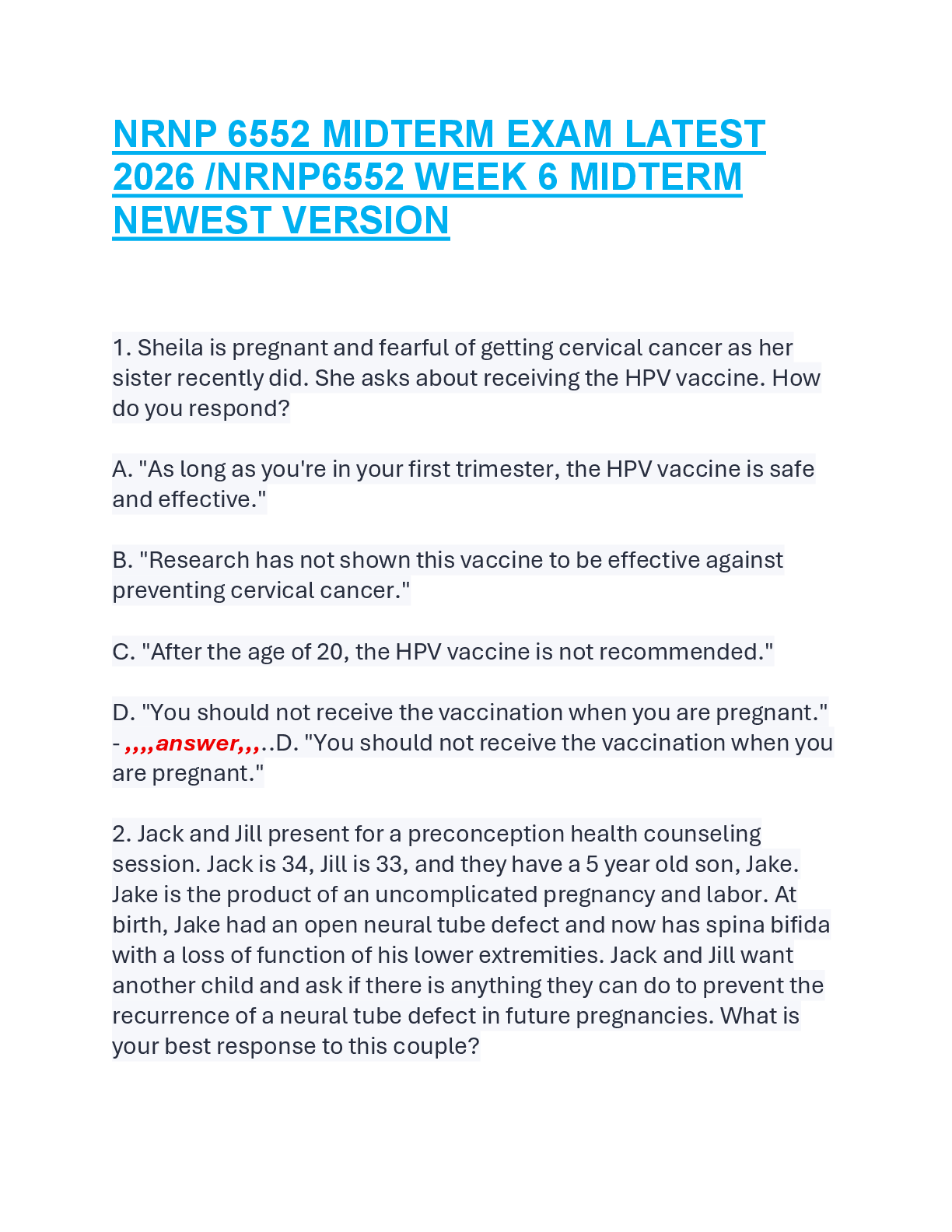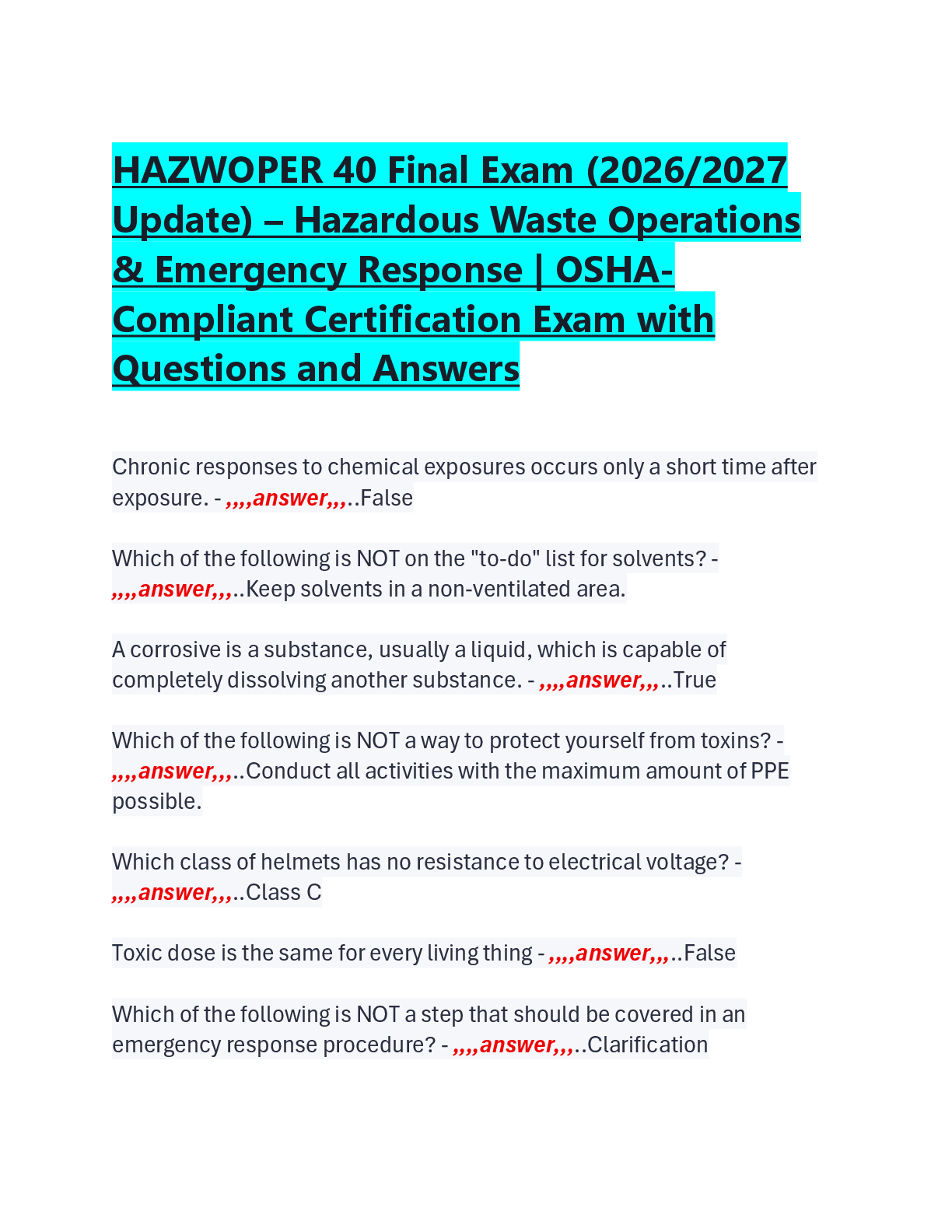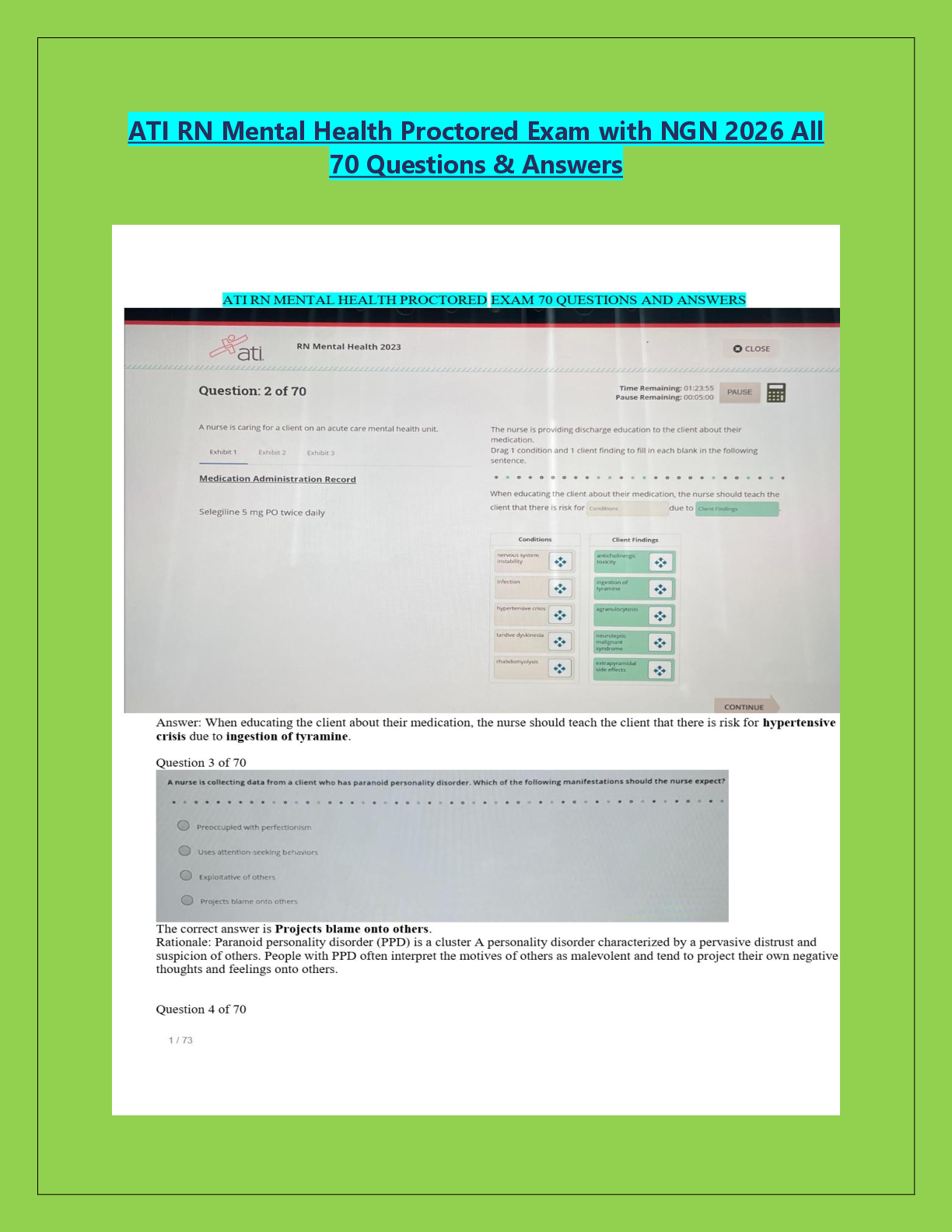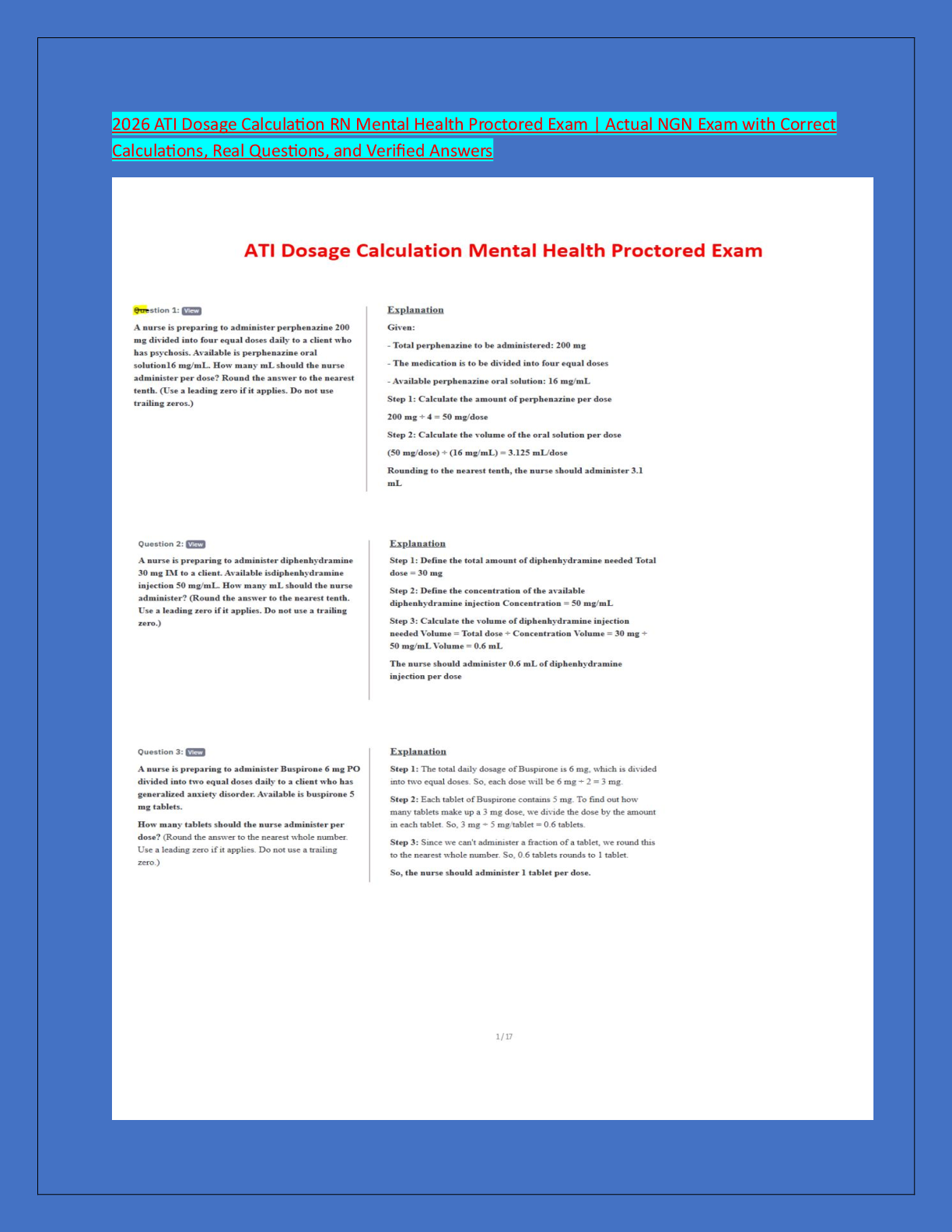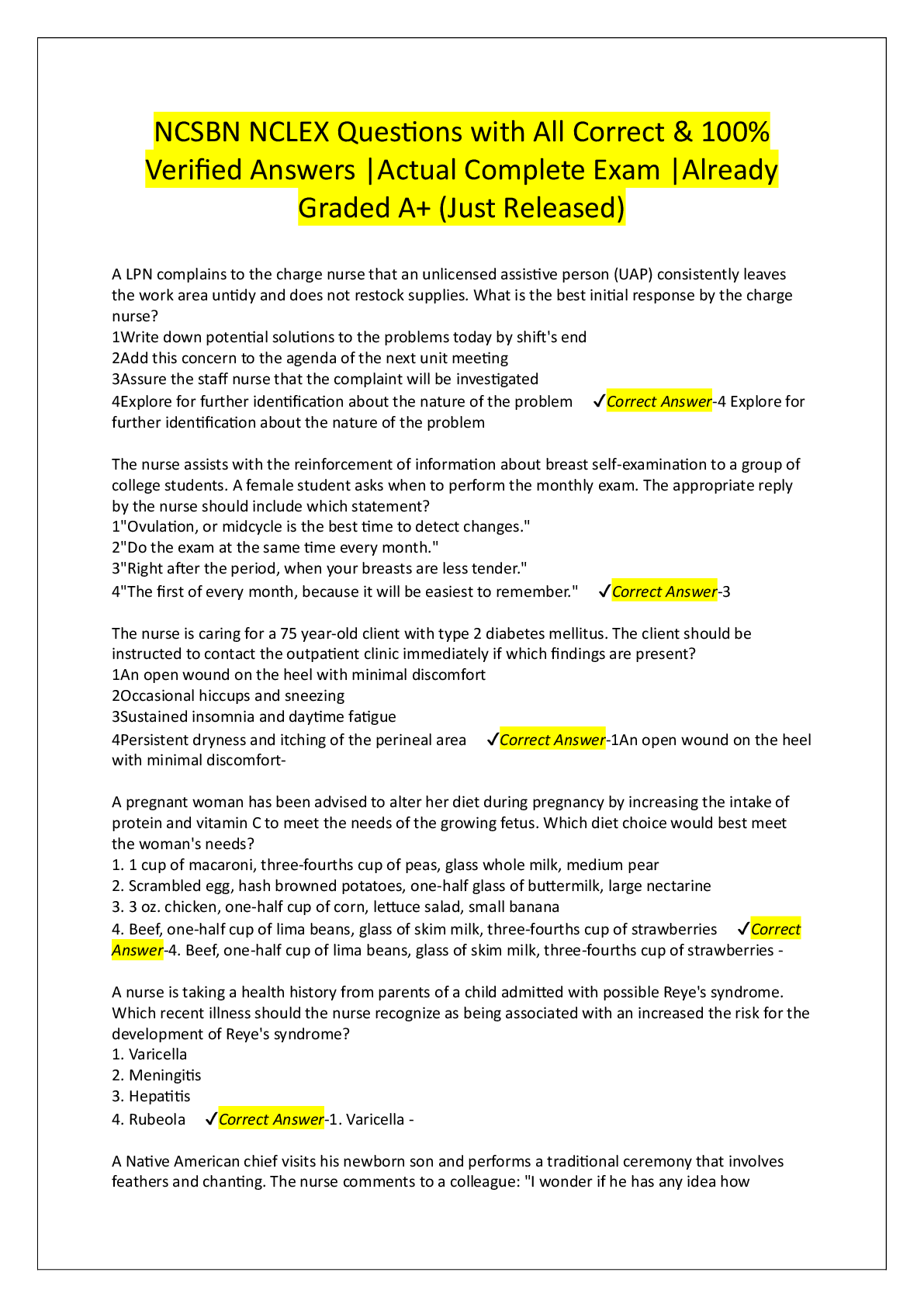NURSING NR508Advanced Pharmacology Mid-Term Exam.
Document Content and Description Below
1. A patient asks a primary care NP whether over-the-counter drugs are safer than prescription drugs. The NP should explain that over-the-counter drugs are: (Points : 2) generally safe when label in ... formation is understood and followed. safer because over-the-counter doses are lower than prescription doses of the same drug. less safe because they are not well regulated by the Food and Drug Administration (FDA). not extensively tested, so claims made by manufacturers cannot be substantiated. Question 2.2. A woman who is being treated with radiotherapy for breast cancer asks her primary care nurse practitioner (NP) about using dietary supplements to improve her chance of recovery. The NP should tell her that: (Points : 2) vitamin E is not harmful but has not been shown to change outcomes. no supplements have been shown to alter outcomes or response to therapy. folic acid and other B vitamins may improve ability to tolerate chemotherapy. vitamin C, taken at least 6 days per week, may lower her risk of cancer recurrence. Question 3.3. A patient with type 2 diabetes mellitus takes metformin (Glucophage) 1000 mg twice daily and glyburide (Micronase) 12 mg daily. At an annual physical examination, the BMI is 29 and hemoglobin A1c is 7.3%. The NP should: (Points : 2) begin insulin therapy. change to therapy with colesevelam (Welchol). add a third oral antidiabetic agent to this patient’s drug regimen. enroll the patient in a weight loss program to achieve better glycemic control. Question 4.4. A patient comes to the clinic to discuss weight loss. The primary care NP notes a BMI of 32 and performs a health risk assessment that reveals no obesity-related risk factors. The NP should recommend: (Points : 2) orlistat (Xenical). surgical intervention. changes in diet and exercise. changes in diet and exercise along with short-term phentermine. Question 5.5. Which of the following statements is true about the prescribing practices of physicians? (Points : 2) Older physicians tend to prescribe more appropriate medications than younger physicians. Antibiotic medications remain in the top five classifications of medications prescribed. Most physicians rely on a “therapeutic armamentarium” that consists of less than 100 drug preparations per physician. The dominant form of drug information used by primary care physicians continues to be that provided by pharmaceutical companies. [Show More]
Last updated: 3 years ago
Preview 1 out of 13 pages
.png)
Buy this document to get the full access instantly
Instant Download Access after purchase
Buy NowInstant download
We Accept:

Reviews( 0 )
$12.00
Can't find what you want? Try our AI powered Search
Document information
Connected school, study & course
About the document
Uploaded On
Sep 08, 2021
Number of pages
13
Written in
All
Additional information
This document has been written for:
Uploaded
Sep 08, 2021
Downloads
0
Views
137

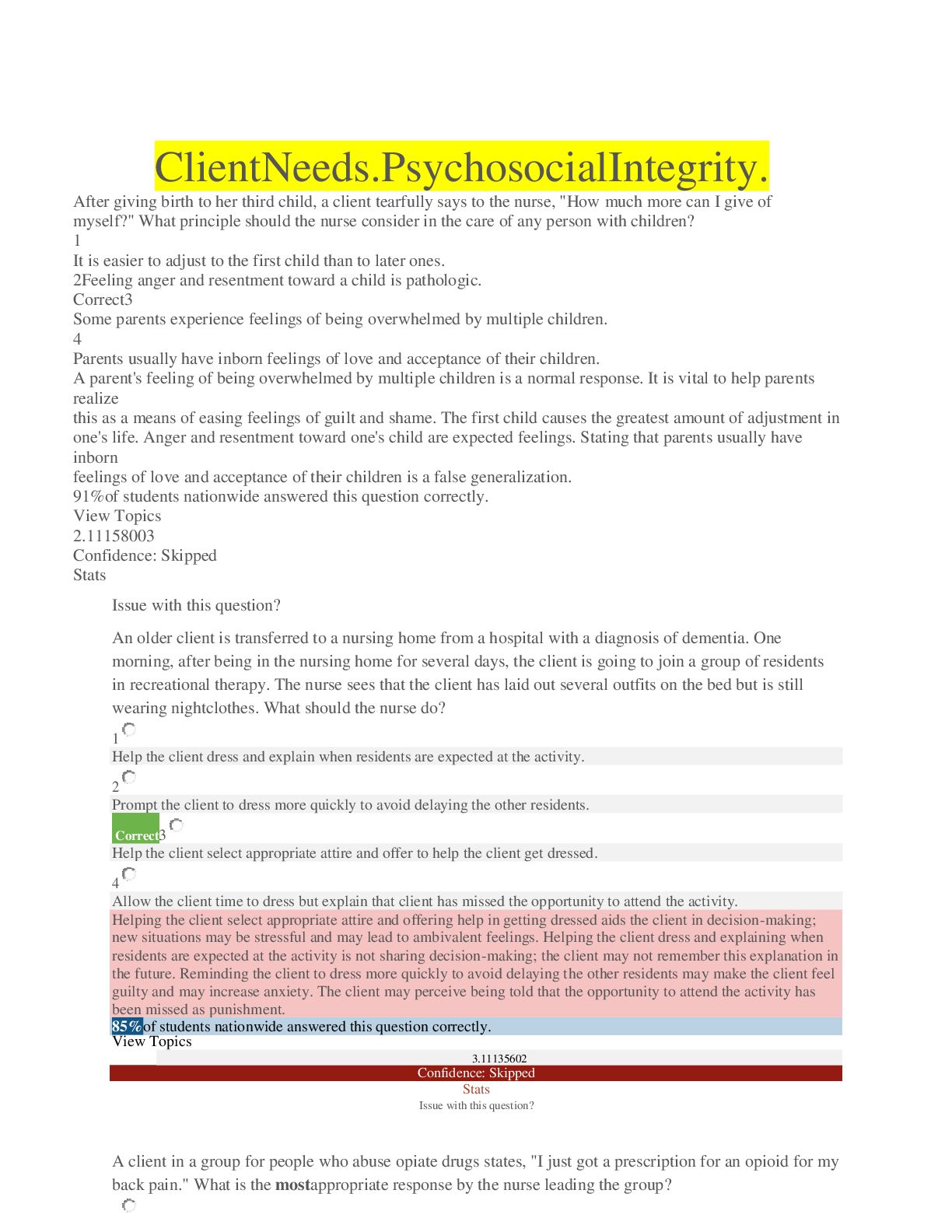




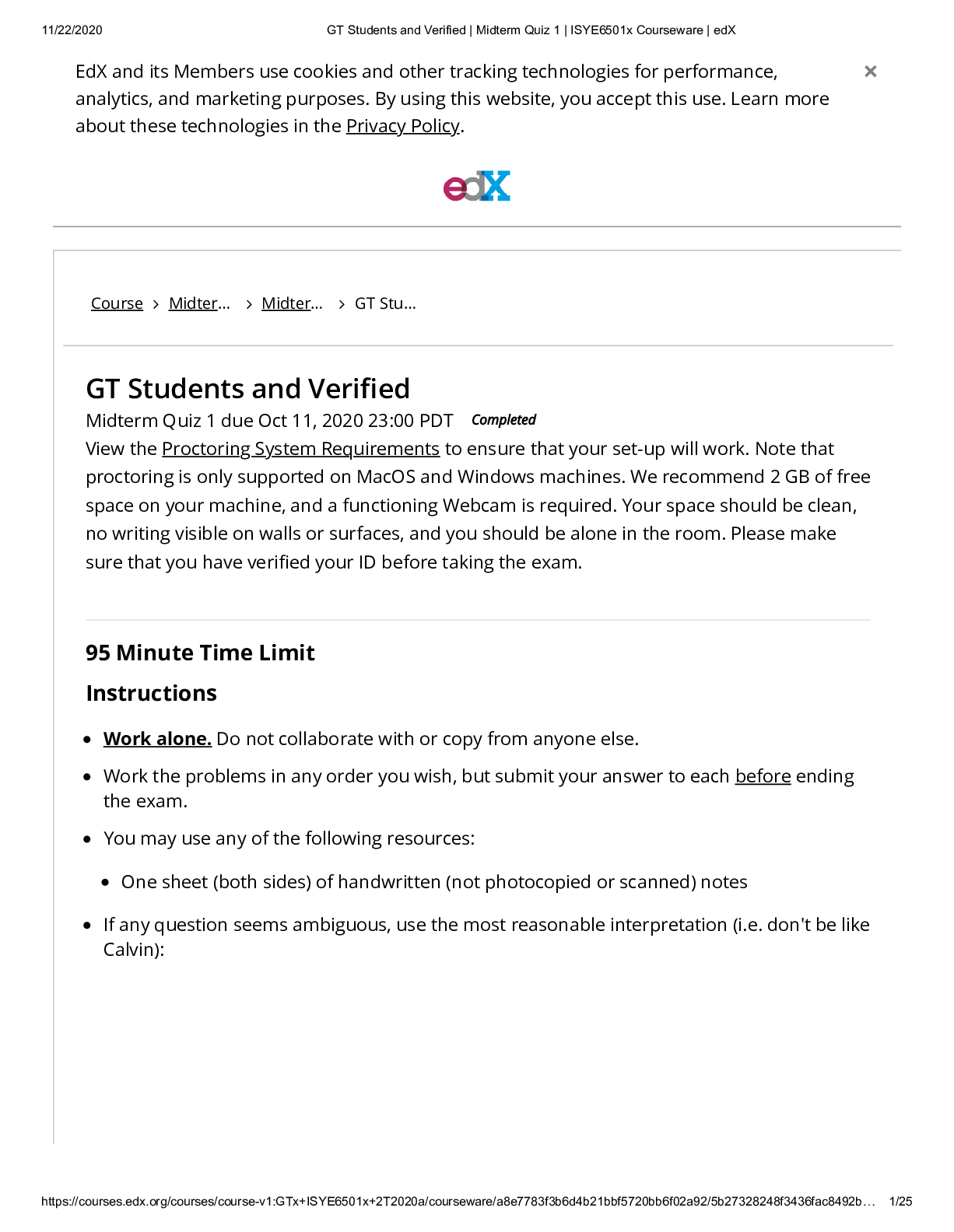
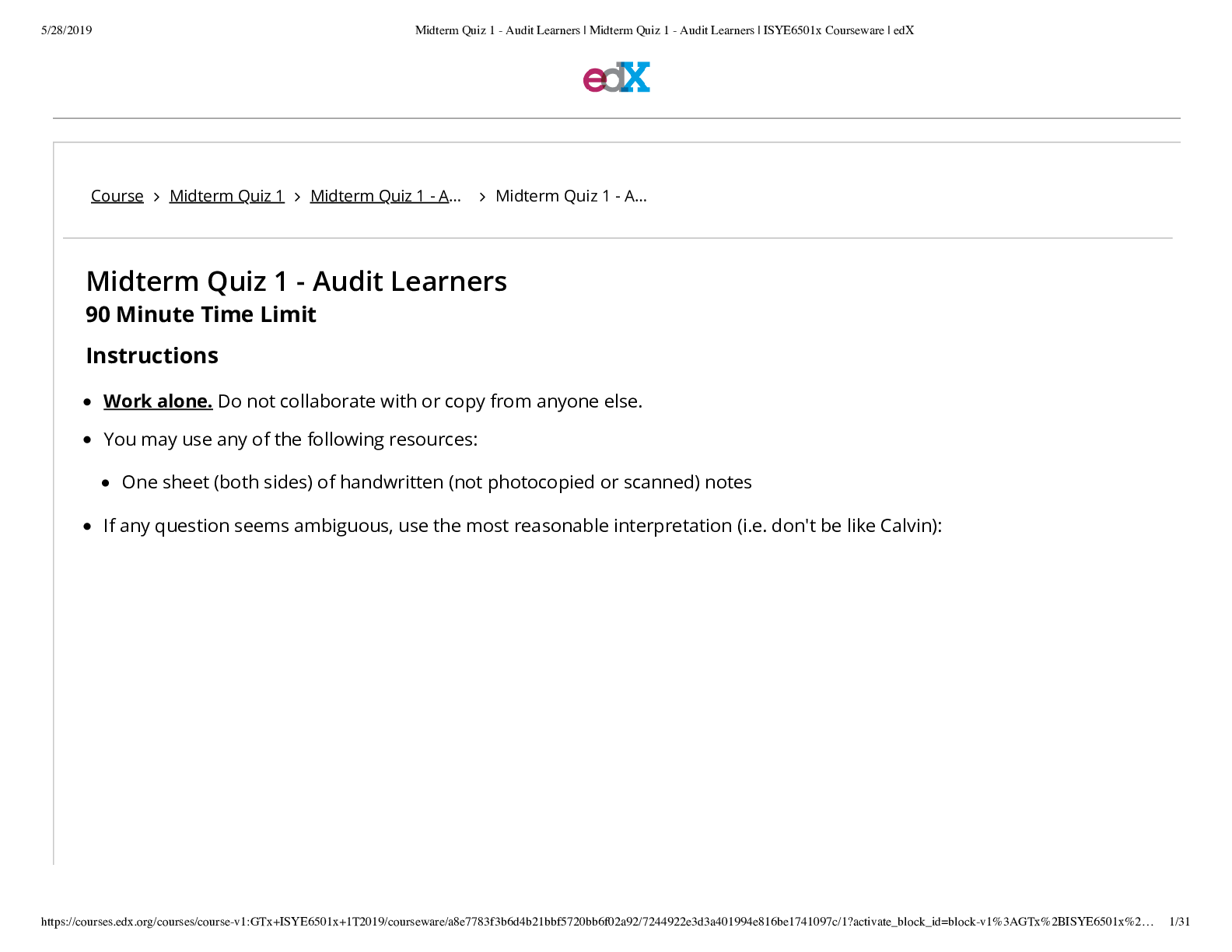
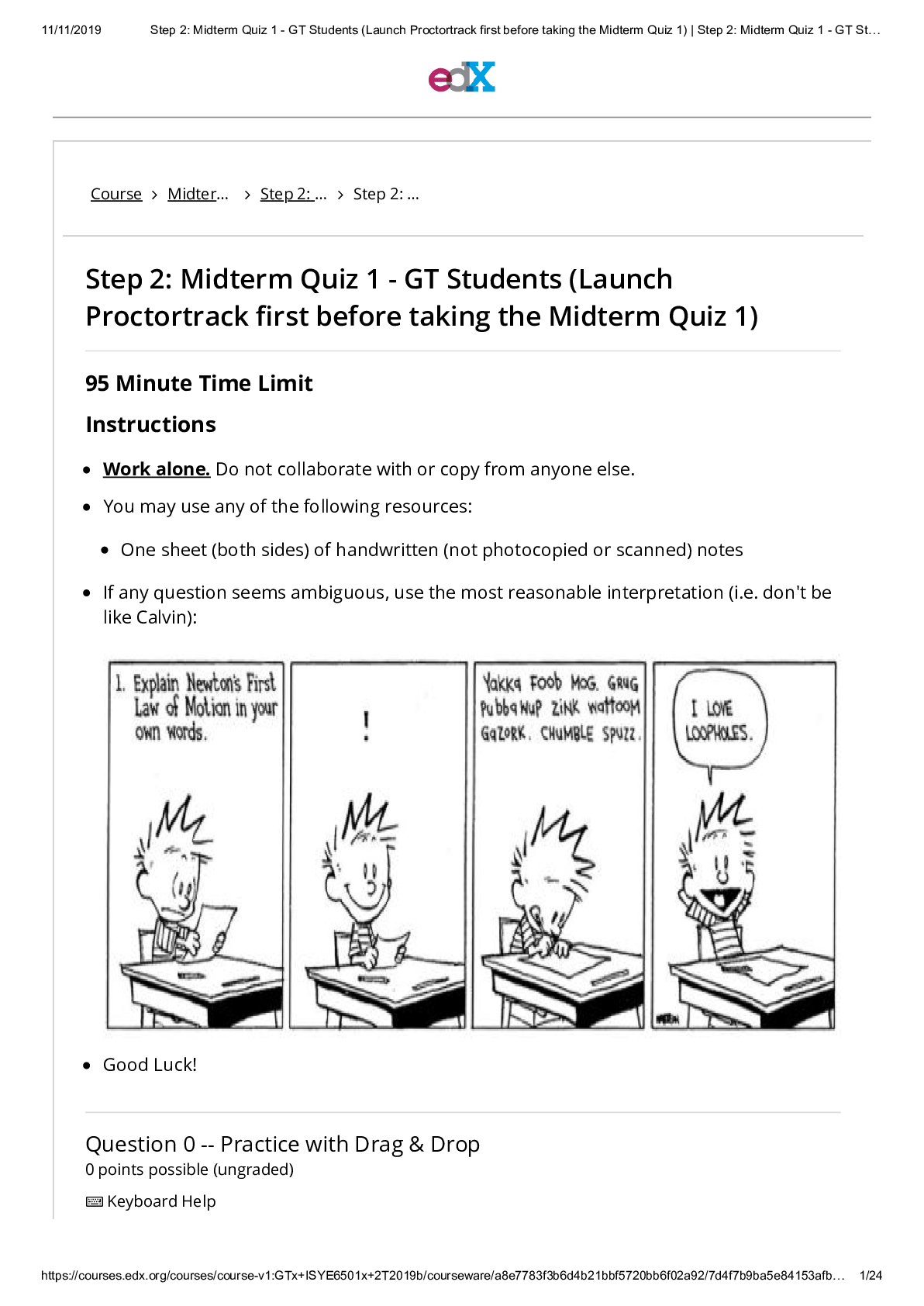
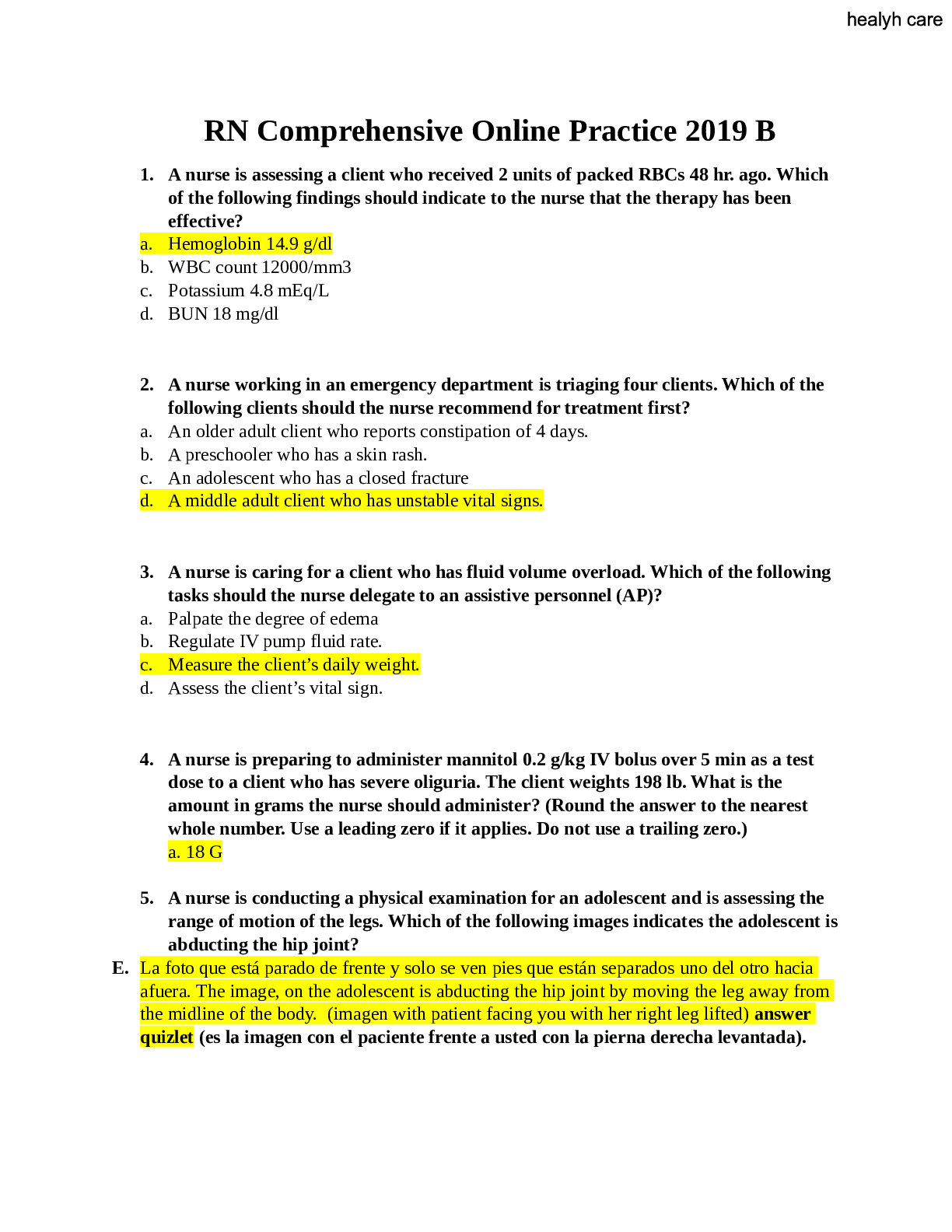
.png)
.png)
